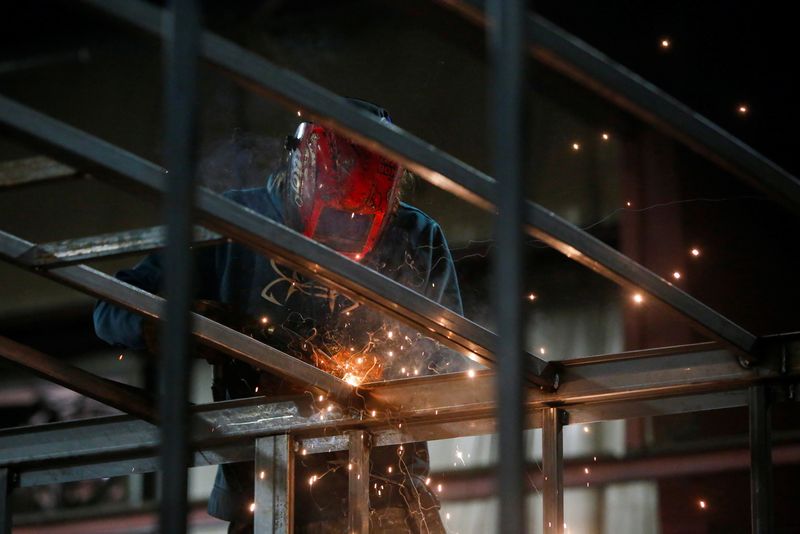WASHINGTON (Reuters) – U.S. manufacturers are optimistic that the sector will emerge from a prolonged recession next year, though capital expenditure growth was likely to fall short of 2024’s pace.
The Institute for Supply Management (ISM) survey published on Monday also found purchasing and supply executives at factories predicted higher employment levels in 2025.
The ISM’s manufacturing Purchasing Managers Index (PMI) has mostly been in contraction territory since November 2022, only rising once above the 50 threshold in March this year.
Manufacturing, which accounts for 10.3% of the economy, was battered by the Federal Reserve’s aggressive monetary policy tightening between March 2022 and July 2023 to tame inflation. Though the U.S. central bank started cutting interest rates in September, the factory PMI has remained depressed.
“Manufacturing’s purchasing and supply executives expect to see overall growth in 2025,” said Timothy Fiore, chair of the ISM Manufacturing Business Survey Committee.
“They are optimistic about overall business prospects for the first half of 2025 and more excited about faster growth in the second half.”
Purchasing and supply executives expected a 4.2% increase in overall revenues compared to a 0.8 percentage point rise reported for 2024. Sixteen of the 18 manufacturing industries anticipated revenue improvement.
They predicted that capital expenditures would increase 5.2% year-on-year, compared to a 5.6% rise reported for 2024. Factory employment was expected to increase by 0.8 percentage point in 2025 relative to December 2024 levels.
Services sector purchasing and supply executives were equally upbeat about next year, predicting a 3.9% increase in revenues, compared to the 3.7% rise reported for 2024. They expected services and raw material prices to increase 5.3%, and forecast their labor and benefit costs rising 3.5%.
Profit margins, which fell slightly in the second and third quarters were expected to rebound between now and May 2025. Services employment was seen rising by 0.8%.
“They are optimistic about the first half of 2025 and expect growth to continue in the second half, with a projected increase in capital investment,” said Steve Miller, chair of the ISM Services Business Survey Committee.

